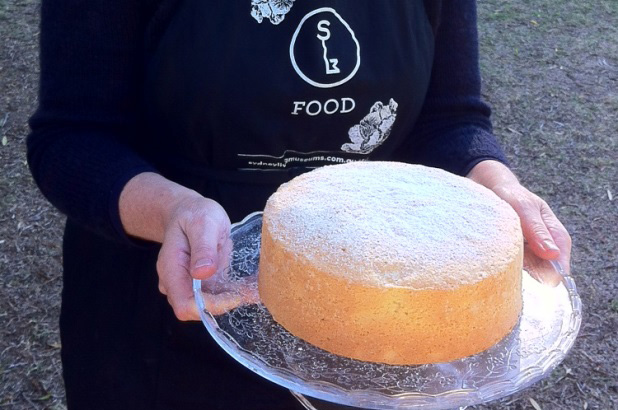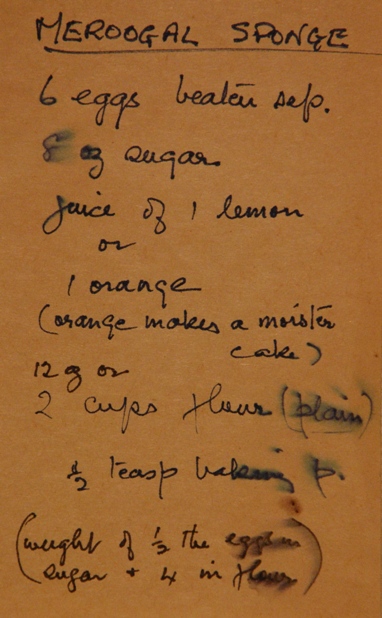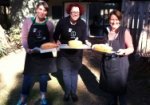Today is #MusCake museums’ cake day! And there is plenty of cake to go around at Sydney Living Museums! The number of cakes consumed on our properties – historically and today – is countless! And there are dozens of cake recipes in our house museums and Caroline Simpson Research library collections – so the cry today is ‘let us eat cake!’

Eat your history recipe testing volunteer, Margot Riley, with handmade Meroogal sponge cake. Photo © Sydney Living Museums
Our Eat your history team of volunteers has been recipe testing the Meroogal heirloom spongecake recipes (there are a couple of variations, even within the family collection) to celebrate #MusCake Museums’ Cake Day 2014! The classic Meroogal sponge – made very traditionally, was the family’s specialty when they hosted ‘at homes’ in the early 1900s. Watch June Wallace, the last of the family to live at Meroogal, make the sponge in her great aunts’ tradition.
Meroogal sponge
Ingredients
- 6 eggs (60 g each), separated
- 280g (1 1/4 cups) caster sugar
- 225g (1 1/3 cups, densely packed) plain flour
- 1/4 teaspoon baking powder
- 2 tablespoons lemon juice (or orange juice)
- icing sugar to dust, optional
Note
At Meroogal this cake was baked into a loaf shape and served perfectly plain. You may prefer to ice the cake or cut it across the middle and fill it with jam and freshly whipped cream.
You can whisk the egg whites for 20 minutes by hand using a dinner knife on a large dinner plate, the way Aunt Kate did at Meroogal; however, an electric beater will make the task much easier.
Serves 8
Directions
| Preheat the oven to 170ºC (150ºC fan-forced). Lightly grease a 20-cm round cake tin and line the base and sides with baking paper. | |
| Whisk the egg yolks with the sugar in a large bowl until the mixture is pale and frothy. Whisk the whites in a large bowl until stiff peaks form – adding a pinch of salt can help achieve this more efficiently. Gently fold the whites into the yolk and sugar mixture. | |
| Sift the flour and baking powder into the egg mixture, and carefully fold though with a large metal spoon, adding the juice 1 teaspoon at a time. Pour the batter into the cake tin and bake for 50–60 minutes or until lightly browned on top and nicely risen – a skewer inserted into the centre of the cake should come out clean. | |
| Allow the cake to cool in the tin for 10–15 minutes, then turn it out onto a wire rack. When cold, sift icing sugar, if using, over the top of the cake. | |
| Cook's tip – when beating egg whites, ensure your equipment is absolutely clean and free of grease, or the whites will not stiffen no matter how long you beat them. Wash the equipment in hot soapy water and wipe dry with a clean tea towel, then polish with paper towel. | |


 Print recipe
Print recipe

